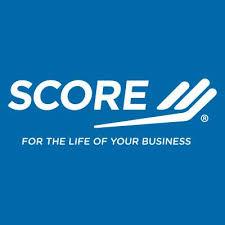
Write something
Its a numbers game
Here are some stats from a JV partner we are working with - they have sent 1800 letters since October (not doing any in December due to Festive Period) to UK Based Baby Boomer businesses. This is complemented with an email (were we can get an email address) and if they are on Linkedin a Direct Message and connection request: SUMMARY Calls done, Pending Financial information to make offer 6 Pending Us Analysing deal to come up with an offer 2 First Call Stage 9 Second Call Stage 5 In Negotiations (probably 2 here that will get agreed) 6 Offer Made, Rejected but Revisit in 6-12 months 21 Reviewed Deal and Not Viable 18 Not Interested in Selling (but responded anyway) 16 First Call Done and now Not Responding 15 Deal Completed 1 Total Leads 99 Current Active Leads 29
Hello
Welcome to the family! 🎉 Thrilled to see you taking steps toward sides! Follow me on Whatsapp for support, freebies, and tips. I’m here to help, so don’t hesitate to DM me with any questions. Let’s thrive together! 💛https://wa.me/message/X6REM2LGB5MJI1
1
0
Looking for Deals?
We come across, distressed and retirement deals daily in the UK, most we don't progress with, if we come across a deal and you would like an introduction, drop what sector you are interested in, in the comments.
Does anyone have experience with an equity roll-in deal?
Hi all, I was talking to an important sports articles distributor to acquire his business, that he wanted to sell. After a couple of weeks he came back to me with the idea of partnering instead to acquire more similar businesses together. Not really what I had in mind, and also I am a bit reluctant to partner with someone I don't really know. What could a solution be? I thought of proposing an asset roll-in instead where his business would give him a minority share in a newco that would go on for similar acquisitions. Does anyone have experience with such a structure? I believe it 's called equity roll-in. thanks for any experience you d be willing to share
Advice on Inventory in Acquisition Deal?
Hi Paul and all, Can I trouble you for a bit of advice? I’m currently negotiating the acquisition of a company with €3.5M in revenue. We’ve agreed on a price that includes €500K in inventory. However, due to the seasonal nature of the business, the inventory is expected to be significantly higher at the time of transfer. The current owner has always used the slower months to ramp up production ahead of the busy season. How should this be handled? - My counsel suggests that the extra inventory should be considered stored production, and that no adjustment to the price is needed. - I take a more nuanced view. Given the seasonality of the business and the owner’s historically loose inventory management, I understand this buildup is meant to keep the factory busy year-round and ultimately leads to future revenue—which I’ll benefit from after the takeover. I’m considering two possible approaches: 1. Limit surplus production before the transfer and spread payment for it at production cost—perhaps with a storage discount—over a year or more, to avoid straining cash flow or disrupting operations. 2. Offer the current owner a commission on the sale of this excess inventory, as it’s sold over the next year. Would love to hear your take. Best, Philippe
1-9 of 9

skool.com/buy-build-selltm-dealmaker-3774
This group is for Entrepreneurs that wants to grow a business to 8 & 9 figures using Mergers & Acquisitions.
Powered by








